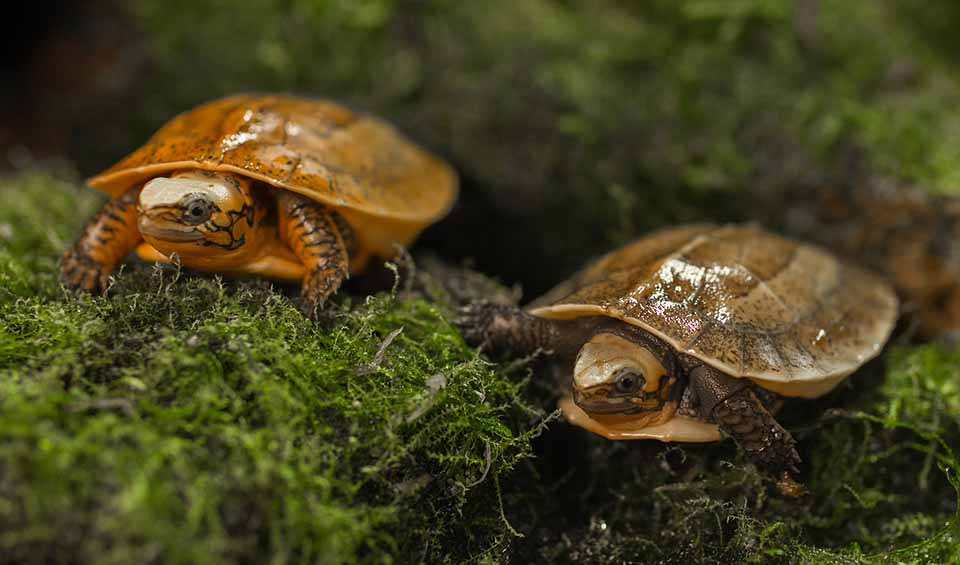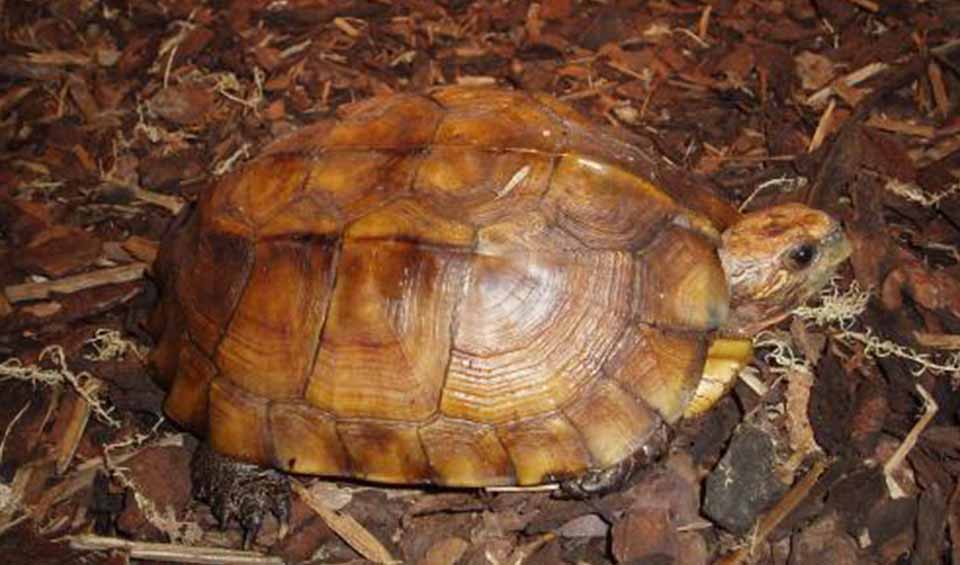Cuora – Asian box turtles
Unlike ordinary turtles, they can completely enclose themselves within their upper shell
A fascinating genus of turtles, commonly known as Asian box turtles, which belong to the family Geoemydidae. These turtles are primarily found in various regions of Southeast Asia, including China, Vietnam, and Indonesia, each species exhibiting unique traits and adaptations to their specific environments. What makes the Cuora genus so interesting is not only their appearance but also their behavior and critical conservation status.
Cuora turtles are known for their hinged plastron, a characteristic feature they share with other box turtles. This hinged structure allows them to close their shell completely, protecting their head, limbs, and soft parts of the body when threatened. This defense mechanism is so effective that it makes them almost impervious to natural predators when fully enclosed.
The habitats of Cuora turtles are as diverse as their appearances. They can be found in a range of environments, from lowland and hill forests to marshy wetlands and rice paddies. Their ability to adapt to various habitats is a testament to their evolutionary success. However, their flexibility in habitat preference also means they are often found near human activities, which has led to significant interactions and impacts.
One of the most interesting aspects of Cuora turtles is their reproductive behavior. They are known for laying relatively small clutches of eggs, usually between two to five, which they bury in soft soils or leaf litter. The incubation period varies, and the sex of the hatchlings can be determined by the temperature at which the eggs are incubated, a phenomenon known as temperature-dependent sex determination.
Unfortunately, Cuora turtles are among the most endangered groups of turtles in the world. Many species within this genus are facing critical threats due to habitat destruction, pollution, and especially over-collection for the pet trade and traditional medicine. Some species are so rare that they command high prices on the black market, further exacerbating their risk of extinction.
Species in this genus
Golden coin turtle
Rarely seen in the wild, making it one of the most threatened turtles on Earth
Indochinese box turtle
Has a hinged shell that allows it to completely shut itself inside
Yellow-headed box turtle
Presumed extinct in the wild, with the last known individual collected in 2013
Yunnan box turtle
Once thought to be lost forever, this turtle emerged from the shadows in a remarkable rediscovery
Keeled box turtle
Its rugged shell makes it look “exotic” to collectors, making it prone to illegal wildlife trade






